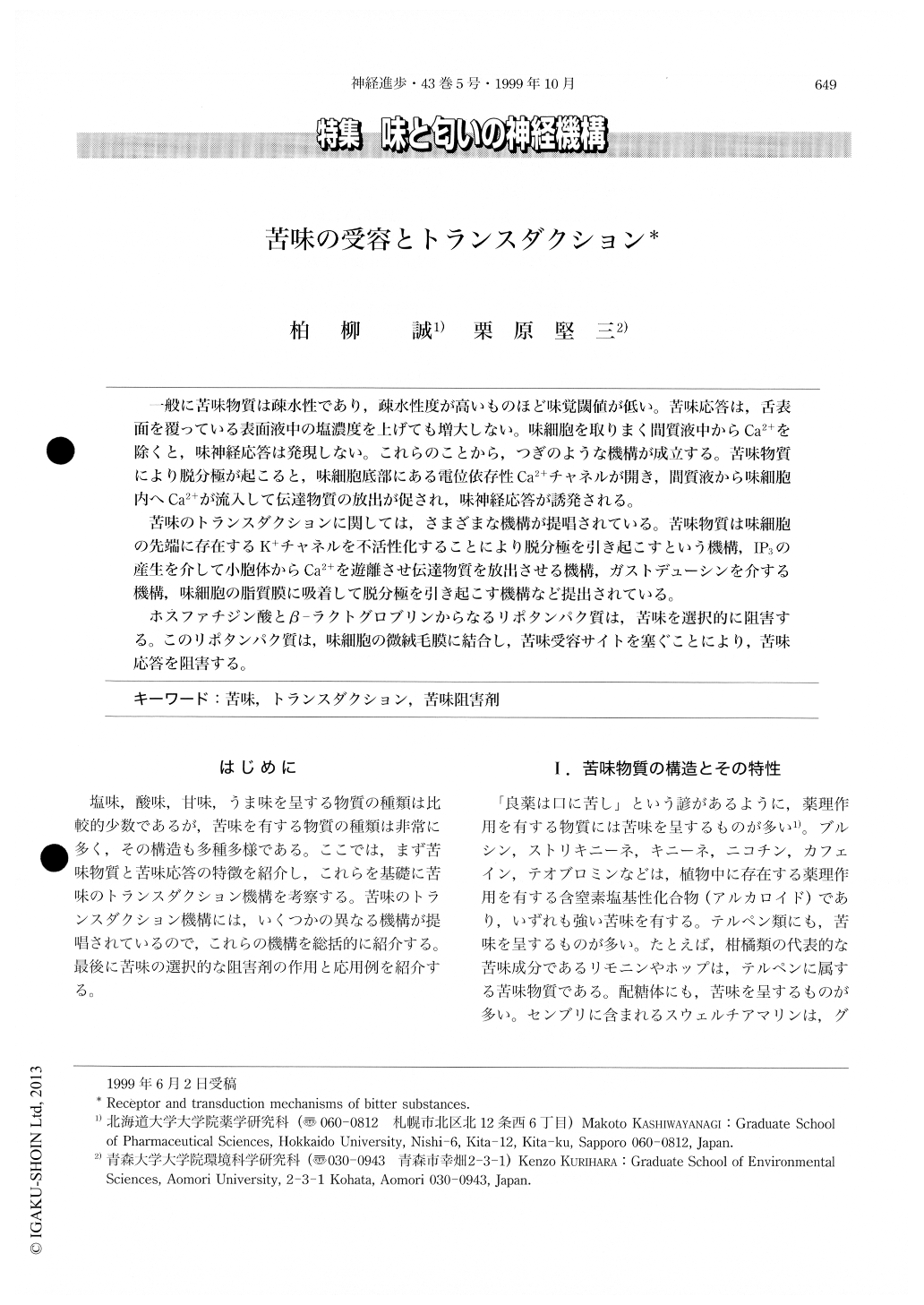Japanese
English
- 有料閲覧
- Abstract 文献概要
- 1ページ目 Look Inside
一般に苦味物質は疎水性であり,疎水性度が高いものほど味覚閾値が低い。苦味応答は,舌表面を覆っている表面液中の塩濃度を上げても増大しない。味細胞を取りまく間質液中からCa2+を除くと,味神経応答は発現しない。これらのことから,つぎのような機構が成立する。苦味物質により脱分極が起こると,味細胞底部にある電位依存性Ca2+チャネルが開き,間質液から味細胞内へCa2+が流人して伝達物質の放出が促され,味神経応答が誘発される。
苦味のトランスダクションに関しては,さまざまな機構が提唱されている。苦味物質は味細胞の先端に存在するK+チャネルを不活性化することにより脱分極を引き起こすという機構,IP3の産生を介して小胞体からCa2+を遊離させ伝達物質を放出させる機構,ガストデューシンを介する機構,味細胞の脂質膜に吸着して脱分極を引き起こす機構など提出されている。
ホスファチジン酸とβ-ラクトグロブリンからなるリポタンパク質は,苦味を選択的に阻害する。このリポタンパク質は,味細胞の微絨毛膜に結合し,苦味受容サイトを塞ぐことにより,苦味応答を阻害する。
Changes in ionic concentration in a solution covering the tongue surface do not affect the taste nerve responses. Elimination of Ca2+ from a solution surrounding taste cell body abolishes the taste nerve responses to bitter substances, suggesting that Ca2+ influx into a taste cell is needed for release of a transmitter from a taste cell. Several transduction mechanisms on bitter reception have been proposed ; bitter responses occur via inhibition ofK+ channel, production of IP3, activation of gustducin and binding of bitter substances to lipid layers of taste receptor membranes.

Copyright © 1999, Igaku-Shoin Ltd. All rights reserved.


